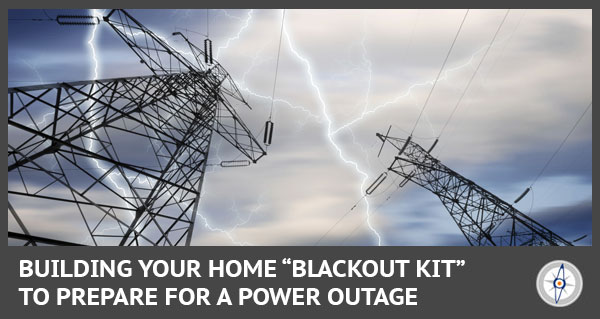
Having a power outage in your home is one of the most common emergencies a person will encounter. If you have ever had a power outage, you know how prepared or unprepared you were.
There are several reasons that a power outage can occur, and knowing how to assess the situation can be vital. In addition, having a plan and having supplies in place can ensure that you are able to get through the outage safely.
One point I must stress from the beginning is that knowledge and practice is more valuable than all the flashlights and candles in the world. Many people think that having a few supplies stashed under the kitchen sink is enough.
Do not misunderstand me. Those items are important. However, they are likely not enough by themselves.
Reasons for Power Outages
There are several causes for the power to go out in a residential household. You might just have a tripped breaker and the outage may be limited to your household. If the outage is larger scale, storms are a common cause.
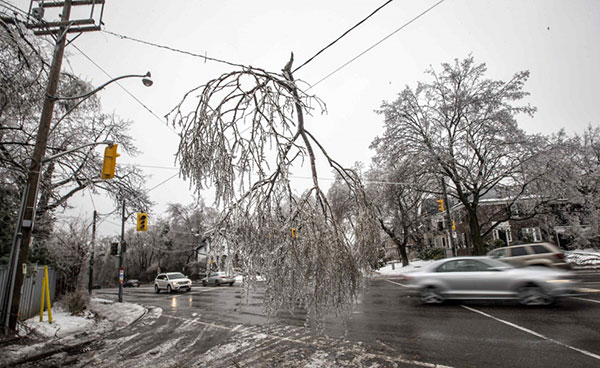
Winter storms can ice down power lines causing them to snap from the weight. Thunderstorms can produce strong winds that can tear down power lines as well. Flooding can affect the electrical grid in several different ways that result in power outages. Extreme heat also puts additional strain on the grid which can cause outages.
You must understand that each of these situations must be treated differently. You cannot just plan for power outages, you have to plan for the different types of power outages and the ways that these causes can affect you and your family. All kinds of complications can occur that will require additional action on your part.
Supplies
There are some basic supplies that you will want to keep on hand for any blackout, and supplies that are specific to different types of blackouts. To put together your kit, you need to first think about what vital tasks you can no longer complete without power. Being able to see at night is one of them.
This means that flashlights, headlamps, glow sticks, lanterns, and candles are all important. Without power, you may lose the ability to cook food. This means you may need alternative methods of cooking such as a camp stove, a gas grill, a charcoal grill, or a camp fire. It also means that it would be smart to have a supply of food that does not need to be cooked.
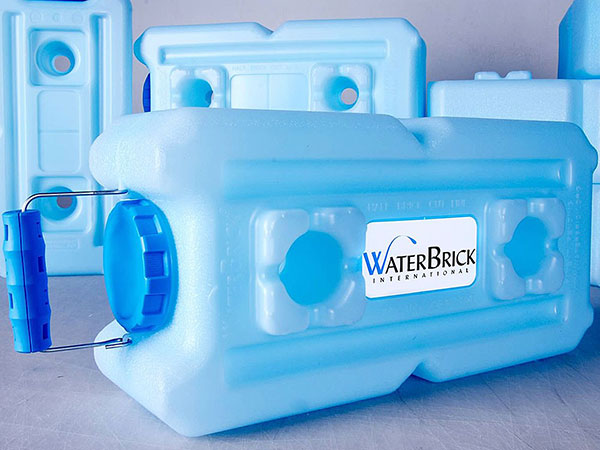
For some people, a power outage would shut down their running water. In these cases you would want to have some water stored for drinking. It is also nice to have alternative, natural sources of water such as a pond, stream, or lake. These sources would require purification before you could drink it. They would be fine for bathing, washing clothes, or washing dishes.
Now you can start to think about your other priorities in a blackout. If a winter storm shuts down your power, you may lose your heat. That means you will need blankets and heavy clothing. If a heat wave shuts down your power, you will want extra water to deal with potential dehydration. If heavy winds knock out your power, you will want a battery powered weather radio to tell you when the storm has passed.
Specific Products to Purchase
There are a few items which I feel are more important than others for your blackout kit. One is a quality flashlight. The average person has a cheap plastic flashlight that is unreliable and burns through batteries. The newer LED tactical flashlights are virtually indestructible. They are waterproof and made of thick aircraft aluminum. You should look for one that puts out at least 500 Lumens. This will ensure it is bright enough for about any situation. It is also nice to have a flashlight with an adjustable focus lens. It will give you a wider beam for close up or a strong, narrow beam for distances up to 200 yards.
In the same realm of lighting products are headlamps and electric lanterns. Pay attention to your lumens and the materials used in their construction. For fire based products like candles and lanterns, be sure to have several ways to ignite the product. Just having matches is a mistake. Keep a few lighters and maybe even a ferro rod so you know you can get the fire lit.
For staying warm in winter conditions, blankets are essential. There are two primary types of blankets that work best in these scenarios. Blankets that are 100% wool are always nice. They are normally very thick and can keep you warm even when wet. Emergency blankets are also good to keep around. They are small and lightweight, but have a reflective surface that holds in 90% of your body heat. You can buy the cheap ‘space blankets’ that are available, but I prefer a thicker tarp-style emergency blanket so I know it will not tear.
Having a Plan
When the lights go out, having a plan to handle the situation is by far the most important aspect of preparation for power outages. The first thing to remember is to always remain calm no matter what the circumstances are. There is no situation that cannot be made worse by panicking. It would be so easy to go running for a flashlight in the dark and injure yourself in the scramble.
The most important aspect of any plan is practice and involvement with the whole family. If any one person in the household is not familiar with the plan, then that person becomes a liability. If you develop a plan and put it on paper but never practice, you are bound to have issues when the time comes to act. Here are some steps to help your family put together your blackout plan.
Step 1) Understand Your Breaker Box
Make sure everybody knows where the breaker box is and how to read the guide. It is very common for a tripped breaker switch to be the cause of the blackout. Everybody that is able should know how to tell a switch has been tripped and how to switch it back on. Designate one person to check the breaker box before heading anywhere else.
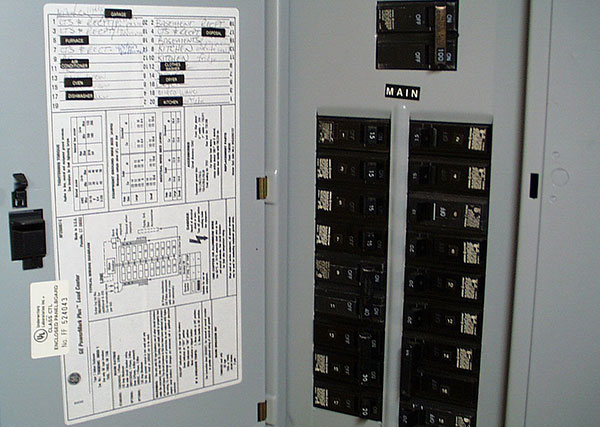
Make sure your breaker box is properly labeled.
Step 2) Assemble your blackout kit with your family.
Make sure everybody agrees on the items included and listen to feedback from anybody in the family. Ensure that everybody knows how to properly and safely use all of the items in the kit. Agree on a smart spot to keep your kit. It should be in an area that is free of obstructions that could trip you in the dark. In our household, the spot for our kit is under the kitchen sink. There is nothing in the kitchen to trip us, and everybody should have a clear path to get there.
Step 3) Discuss a good spot for the family to move to after getting the kit.
Every member of the family that is able should meet at your blackout kit. Once you have a flashlight you can safely move to a more comfortable room. This room should ideally work for any type of blackout you could face. For example, we live in an earth contact home and our master bedroom is almost entirely underground. There is enough room in our bed for my wife, my son, and myself. In the event of strong winds we are protected. In addition, if we lose heat in the winter we can close off the room and snuggle under the blankets to stay warm. Remember that less air to heat means a warmer room. You have to close off your area when the heat gets shut off.
Step 4) Practice and then practice even more.
With a situation like a blackout, you do not realize how difficult the process can be until you put yourself and your family into that situation. I suggest that you ease your family into drills that help you prepare for this scenario.
First, you can use blindfolds and guide each person through your house to show how tough navigation in the dark can be. Next, you can cut off the power and work in teams of two to move through the house. You can put everybody at the furthest point from your blackout kit and see who can safely get there first. Do the same with the breaker box.
Finally, you can time the group to see how long it takes for everybody to get to the blackout kit and then to congregate in your blackout room. Remember that your family is no better than your weakest link. Set your times based on the slowest member of the group.
Intentional Blackouts and EMP Blasts
While it is not a common occurrence, there are scenarios in which a group of people can cause a large scale blackout intentionally. I am not going to get into all the different conspiracy theories out there, but the fact remains that the possibility is there. Technology exists that could temporarily or permanently shut down the power grid in large chunks of the United States.
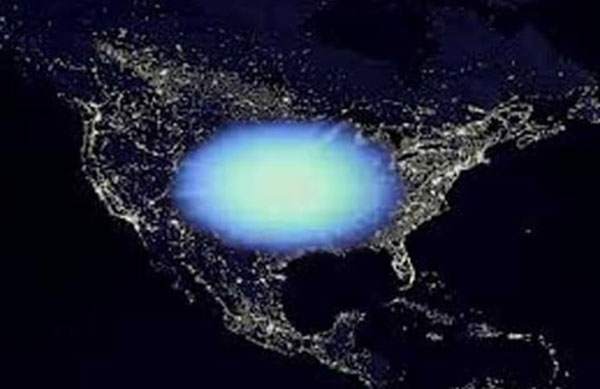
A successful EMP attack could shut down large parts of the power grid.
So why would anybody want to shut down the power grid? There are both foreign and domestic groups that could benefit from such a move. More specifically experts have predicted that if any force ever wanted to attempt to take control of the United States, they would likely attempt to shut down the power grid as a first move. By shutting down the power, a panic would be created that would rip our society apart. In addition, it would shut down much of the ability we see from our military and police forces. It would essentially send the United States back to the industrial revolution.
There are several ways that the power grid could be disabled if a force desired. Hackers could attack power plants all over the country from the comfort of their own homes. Military forces could physically cut power lines as they move through an area. In addition, there are devices that could be deployed by ground or air that send out an electromagnetic pulse. Some of these devices are non-nuclear and some EMPs are a side result of a nuclear blast. This pulse overloads almost all electrical circuits causing permanent damage. A large scale EMP blast could cause damage that would take years to repair.
So what can we do?
Know the signs of a large scale power outage. First check to see if battery powered devices are working. An EMP blast would take out most electrical items not connected to the grid. If the scope of the blackout seems large and your cell phone is still working, call somebody several hundred miles away and see if they have power. This will tell you how large an area was affected. If the power outage is truly large scale, you want to be one of the first people to realize it.
The reason is that you will need to have a head start on other people in your area. You will want to gather your supplies, secure your property, and prepare to make drastic changes to your daily lives. This may mean relying on hunting, fishing, and gardening for food. It may mean finding an alternative water source. It may even mean bugging out to get away from the hordes of panicked people. Remember that those that are not prepared will try to take from those that are prepared.
Final Thoughts
Whether you are dealing with a tripped breaker or a large scale event, preparedness is vital. Even a small power outage can turn into a major disaster if you do not have a plan in place to handle it. Power outages are one of the most common emergency situations that a family in our society will face. Do not wait on this one. Even a small power outage can turn into a major disaster if you do not have a plan in place to handle it. Take the time to get your blackout kit together, talk to your family, and be ready when the time comes.
If you liked this post checkout 5 Off-Grid Power Sources That Can Save You When You’re In A Pickle.
=====
Become a Survival Dispatch Insider …
We bring together survival enthusiasts and preppers to share skills and knowledge, so you can enhance your preparedness for emergencies and ensure the safety of you and your community.
The Results You’ll Get …
Our community, courses, and memberships are pretty special. We focus on the ways it will make a huge difference in your life.
Here are a few of the things you’ll be able to do as a member of Survival Dispatch Insider …
1) Improve your emergency preparedness by learning survival skills and strategies from experienced preppers.
2) Build lasting connections with like-minded individuals that share your passion for safety and readiness.
3) Access a wealth of knowledge and resources to assist in protecting you and your community during unexpected situations.
Click HERE to get started.
=====
